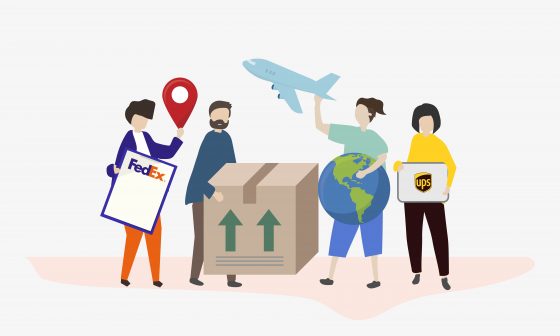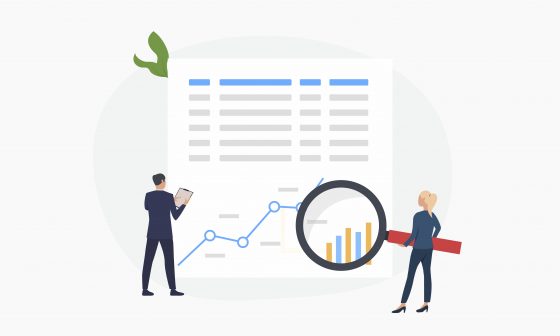As an eCommerce business owner, you are constantly experimenting with new ways to maximize your revenue. Traditionally, more sales equal more revenue. So you double down on your marketing efforts – from adding a creative twist to your newsletter to optimizing the check-out page for a seamless online buying experience.
But customers are still dwindling.
Wonder why?
The best way to drive more sales is to offer an exceptional last-mile delivery experience to your customers. Surprising isn’t it? Almost every ounce of hard work put in by your sales team will be hastily offset by poor last-mile order fulfillment.
Here’s more proof:
69% of consumers are less likely to shop with a retailer in the future if a purchase is not delivered within 2 days of the date promised.
An exceptional order delivery experience drives a higher customer satisfaction rate. Happier customers are likely to spend 140% more compared to unhappy ones.
Customer relationships matter more than ever because your future revenue depends on those relationships lasting well beyond a single transaction.
~ Mikkel Svane, co-founder, Zendesk
Most eCommerce companies rely on third-party shippers namely FedEx, UPS, DHL to fulfill their orders. Although delegating last-mile fulfillment frees up a major chunk of resources and time for retailers, it comes at a price. Retailers lose control of their last-mile delivery experience.
They heavily rely on carriers such as FedEx, UPS or DHL to keep up their delivery promises.
Luckily, metrics come to the rescue. By measuring key last-mile delivery metrics, retailers can evaluate, iterate and perfect their last-mile delivery experience.
Retailers can take back control of last-mile delivery while still shipping through FedEx, UPS, and DHL. We have highlighted KPIs that will help you drive a more effective last-mile delivery strategy and win back customer loyalty.
Here are 7 critical metrics that need to be measured by every eCommerce company that ships through FedEx, UPS or DHL:
1. On-time delivery performance
On-time delivery of an order is the king of last-mile metrics. Almost 90% of online shopping decisions are influenced by faster delivery times. It is true that customer delivery expectations are unbelievably high – thanks to Amazon’s same-day delivery. But meeting delivery commitment supersedes faster delivery. At the least, eCommerce retailers are expected to fulfill delivery promises.
Say a customer opts for a 2-day FedEx/UPS ground shipping option. Due to inclement weather, the order is delivered 5 days later than the promised date. To top that, your customer has no mechanism to track the order. Right there your customer satisfaction just plummeted. The likelihood of this customer returning to your store is less than 5%.
It seems unfair that you are forced to pay the price for a service failure committed by your shipping carrier. Your brand takes the beating. And you struggle to right this wrong. Shipping carriers like FedEx, UPS or DHL are comparatively robust in last-mile order fulfillment. However, their service failure rate is still high.
Check out the on-time performance of UPS and FedEx in 2018
The first step in holding your shipping carrier accountable is by measuring the on-time delivery rate.
Here’s how you calculate the on-time delivery percentage for FedEx and UPS shipments:
- Fetch the ship date of the order.
- Determine the estimated delivery date using the transit time finder for FedEx and UPS.
- Then divide the number of packages that have valid tracking information by the number of tracked packages that were delivered on time.
This will give you a fair estimate of the performance of your carrier. Further analysis of the trend over a period of 90 days, 180 days will help you predict your future deliveries. Categorizing them based on FedEx and UPS delay reasons will bring more clarity.
Of course, if you are using an automated audit service like AuditShipment, the on-time performance report is readily available 24/7 on your dashboard.
Here’s a sample view:
If you observe that your shipping carrier is consistently delivering packages late, you must renegotiate your shipping contract, recover refunds for delays and reset your delivery commitments to customers. A majority of global carriers such as FedEx, UPS, and DHL offer a money-back guarantee when they fail to honor their on-time delivery commitment.
Read more about FedEx, UPS and DHL money-back guarantee.
Claiming your money back for delayed deliveries is the first step towards shipping cost optimization. AuditShipment offers an automated, effortless way to get the refunds that you are entitled to receive from FedEx, UPS and DHL. This saves up to 16% of shipping costs at zero upfront costs.
Focus on scaling your business while AuditShipment does the heavy lifting for you.
2. Shipment Damage
The unboxing experience for an online buyer is the moment of truth in the shopping journey. If a brand fails to make a lasting impression, the customer loses faith. Your customer satisfaction and loyalty suffer a major setback with every damaged order. According to research, close to 6.4 billion packages were returned due to damages during the 2018 Holiday.
Again the damaged package rate can be calculated by dividing the number of damaged packages by the total number of packages delivered in good condition. However, the only caveat is arriving at the number of damaged packages.
Unfortunately, the first time you hear about a delivery issue is when a customer calls your support center. FedEx or UPS fails to mark approximately 90% of deliveries as damaged. This poses a big challenge for retailers.
On one hand, the burden on your support center keeps rising. On the other hand, the cost of managing returns and dispatching exchanges for damaged goods negatively impacts your bottom line. Applying for a refund for FedEx and UPS refunds for damaged shipment is a long drawn process involving mentioning details of package content, the value of the order and the nature of the damage.
By the time you collect the required details, the customer probably switches to your competitor.
Incorporating a lost and damage management widget in your last mile strategy can halve your support center costs as well as boost your bottom line.
3. Last-mile Tracking
How will you contain the WISMO ( where is my order) breakout? As a logistics manager, most of your work time is spent on playing negotiating tennis between your shoppers and shipping carriers. FedEx and UPS do have a robust order tracking page. You may track your pages on FedEx tracking page or UPS tracking page.
But here’s where it gets tricky:
- FedEx/UPS tracking sites may not have the updated order transit information.
- The customer has to engage with FedEx/UPS to learn about their package whereabouts.
- Customers expect the retailer to keep them informed on order transit and delivery information. This may include notifying them about potential delays, transit times and delivery issues.
Your customer needs a single source of truth. You need to offer frequent order updates and delivery notifications. What you need is a real-time tracking service. A real-time tracking service that offers the convenience of tracking orders within your website as well as sending email notification on a single click.
4. Shipping Spend
Shipping costs form a major part of eCommerce expenditure. Free shipping is more or less a norm for online retailers. Nothing is more off-putting than a hefty shipping fee. 9 out of 10 online shoppers expect free shipping to incentivize their purchases. Moreover, a study states that 93% of buyers are prepared to buy more in order to qualify for free shipping.
Before retailers decide to promote free shipping on their orders, they need to study their shipping spend and the factors that influence them such as the geographical location of their customer base, the proximity of warehouse distribution center, order volume, etc.
In order to build a sustainable profit-generating shipping strategy, you need to track the following metrics:
- Average shipping cost per order
- Average order volume
- Average price of your order
FedEx and UPS invoices include a base transportation charge. This charge is usually negotiated based on your shipping profile. Both FedEx and UPS set a minimum charge for shipping a package of a certain weight to a certain zone.
For example: To ship 1.1 lbs package to zone A it may cost you 10 USD whereas shipping the same package to zone C may cost you 14.12 USD.
Decisions such as should you have free shipping promotion? Should there be a minimum order purchase qualifier? Is it economically viable to ship to a certain geography? – must be based on your shipping expenditure analysis.
One of our customers wanted us to help them solve a specific use case:
“We are on the East Coast. When someone from the West Coast orders from us, we need to figure out what is the best service type to ship without losing money. We also want to know if the shipping cost of that order exceeds the order value.”
We came up with a shipping spend tracker that gives a granular breakdown of their shipping expenditure based on the most common service type, weight and consignment destination.
Here’s a screenshot of the partial shipping expenditure report:
5. Accessorial Charges
The proportion of accessorial charges can tip the scales of your shipping strategy. As of 2020, accessorial charges make up to 40% of your FedEx and UPS invoices. Residential area surcharge, fuel surcharges, address correction charges, Additional handling charges are few of them. ( Read more about surcharges here)
To give you an idea, these are the charges lurking on your FedEx/UPS invoice:
It is crucial to mark the overage threshold for the various accessorial charges that form a part of your shipping invoice. A thorough analysis of your FedEx and UPS shipping invoice will highlight the charges that appear on a recurrent basis.
By smartly negotiating with your shipping carriers, a majority of the charges can be reduced.
For example: In the case of volatile fuel surcharge fluctuation, instead of dynamic pricing, flat rate fluctuation-neutral charge must be agreed upon.
However, most retailers have zero visibility of what goes into their shipping costs. This is largely due to the unavailability of unbiased contextual data.
In order to bring more transparency to the shipping invoice process, at AuditShipment, we have built a surcharge report.
This surcharge report brings to light:
- The entire array of accessorial charges that are applied on your invoice
- Incorrect fees and billing errors that are recurring
- Overcharges that can be negotiated
6. Packaging and Dimensional Weight
Packaging plays a big role in delivering an exceptional last-mile experience to your customers. Packaging options are a dime a dozen. From corrugated boxes to paperboard boxes – not to forget eco-friendly options.
From a shipping cost perspective, both FedEx and UPS apply dimensional weight pricing to your shipments.
Here’s how you calculate the dimensional weight of a package:
- Find the actual weight of the package
- Measure the length, breadth, and height of your package.
- Find the product and divide the result by dim divisor.
- The current dim divisor for both FedEx and UPS packages is 139
- Compare the actual weight with Dimensional weight.
- The higher of the two is the billable weight
AuditShipment’s Dim weight analyzer brings to surface the difference between the billed and actual weight. We also recommend a number of data-backed suggestions to close the gap and get your packages to be billed at their actual weight:
The difference between the actual weight and dimensional weight can be anywhere between 5% and 40%. If the variance is more than 20%, you have to reconsider your packing techniques. Also, most businesses are unaware that the dim divisor ( 139 is the current divisor) is negotiable. Both FedEx and UPS agree to increase the Dim divisor depending on your shipping volume and zone to which your consignment is shipped.
7. Fulfillment Cost Per Order
As the name suggests, this metric helps you track shipping spend for every order. This helps you pit against the cost of shipping, the sum total of order value. It is especially helpful metric in determining the delivery mode, eligibility for international deliveries, minimum purchase volume that need to be bundled into selling the order online.
Your last-mile delivery is going to be bumpy. Even with the help of global shipping partners such as FedEx, UPS, and DHL. Continuously monitoring key metrics will help you get to deliver on your brand promise to your customer. The success of an eCommerce business ultimately relies on seamless final-mile delivery experience.
At AuditShipment, we help businesses track all these 7 key last-mile delivery metrics along with disputing the overcharges and recovering refunds on your behalf from FedEx, UPS, and DHL.
Reach out to us to not just optimize your shipping costs but also sketch a winning last-mile delivery strategy for your online shoppers.






